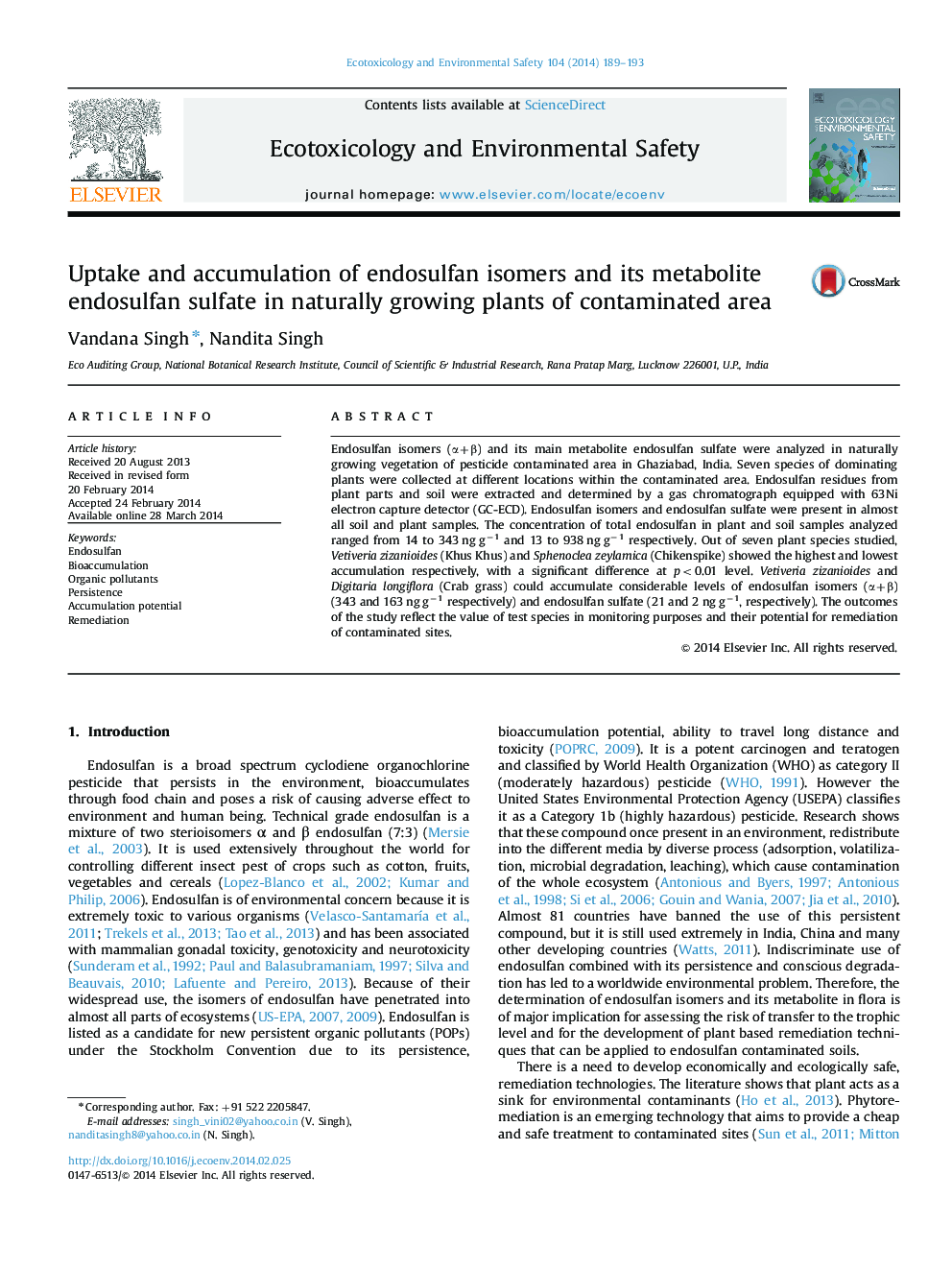| کد مقاله | کد نشریه | سال انتشار | مقاله انگلیسی | نسخه تمام متن |
|---|---|---|---|---|
| 4420159 | 1618959 | 2014 | 5 صفحه PDF | دانلود رایگان |
• Plants were collected in contaminated area and analyzed for endosulfan isomers and endosulfan sulfate.
• Two plant species accumulated very high concentration of endosulfan.
• These plants can be used for phytoremediation of contaminated sites.
Endosulfan isomers (α+β) and its main metabolite endosulfan sulfate were analyzed in naturally growing vegetation of pesticide contaminated area in Ghaziabad, India. Seven species of dominating plants were collected at different locations within the contaminated area. Endosulfan residues from plant parts and soil were extracted and determined by a gas chromatograph equipped with 63Ni electron capture detector (GC-ECD). Endosulfan isomers and endosulfan sulfate were present in almost all soil and plant samples. The concentration of total endosulfan in plant and soil samples analyzed ranged from 14 to 343 ng g−1 and 13 to 938 ng g−1 respectively. Out of seven plant species studied, Vetiveria zizanioides (Khus Khus) and Sphenoclea zeylamica (Chikenspike) showed the highest and lowest accumulation respectively, with a significant difference at p<0.01 level. Vetiveria zizanioides and Digitaria longiflora (Crab grass) could accumulate considerable levels of endosulfan isomers (α+β) (343 and 163 ng g−1 respectively) and endosulfan sulfate (21 and 2 ng g−1, respectively). The outcomes of the study reflect the value of test species in monitoring purposes and their potential for remediation of contaminated sites.
Journal: Ecotoxicology and Environmental Safety - Volume 104, June 2014, Pages 189–193
